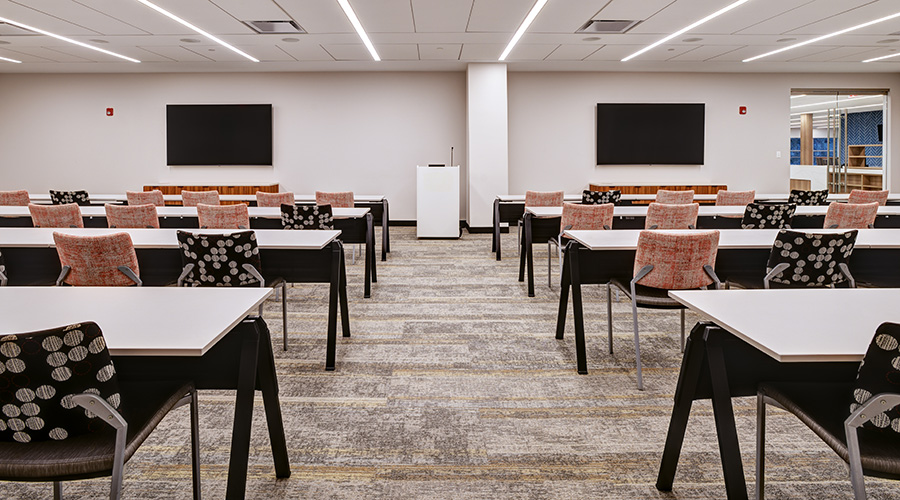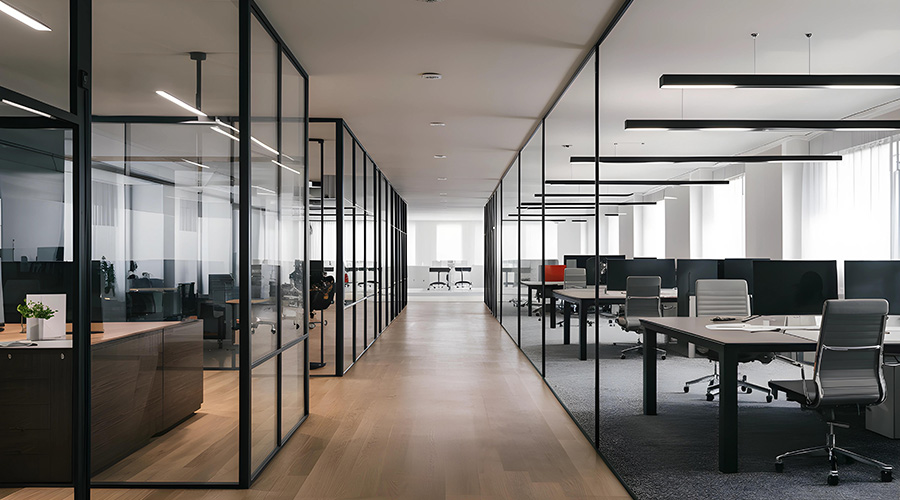Amenities That Encourage Employees to Return to the Office
Organizations need to ‘earn the commute’ and show there is value in physical work spaces
By Ashley Beebe, Contributing Writer
As the COVID-19 pandemic nears its fourth anniversary, companies and organizations are urging employees to return to office buildings to complete work tasks, but employees are pushing back.
Employees cite improved productivity, flexibility, work-life balance and the lack of a commute as reasons they don’t support returning to physical work offices. Companies and organizations now offer amenities to make it easier for employees to return, including new technology, flexible work hours and a strong sense of community.
Matt Weko, a managing director at Work Dynamics, JLL, and Robert Gebhardt, FMP, CHP, senior director, global experience lead at Work Dynamics, JLL says “earn the commute” is a phrase that is used to describe the return-to-office struggle many organizations are facing.
“If employees are going to be making the commute into the office, they want to see and feel the value. That value comes when organizations use magnets – rather than mandates – to encourage office use and when employers are transparent about hybrid work policies,” say Weko and Gebhardt. “In order to be a magnet, the workplace needs to have a clear purpose, provide opportunities to collaborate and support seamless collaboration.”
One way to earn the commute is to make sure employees understand how the purpose of the office and their work contribute to the overall goal of the organization. With this knowledge, employees are more likely to feel a sense of satisfaction and fulfillment in the workplace, say Weko and Gebhardt.
“Purpose-driven workplaces also attract top talent who are looking for meaningful work experiences and opportunities for personal growth,” they add.
Another way to encourage employees to return to the office is through offering flexible workplaces and work policies. Allowing employees the freedom to decide where and when they work, like a hybrid work schedule, can enable them to use the physical workspace better, say Weko and Gebhardt.
Flexibility also promotes productivity, allowing individuals to work in environments that support their preferences and needs.
Infusing technology into the workplace is key as well, they say.
“Easy-to-use applications to reserve meeting spaces and desks, digital signage that indicates who is working where, and smart meeting rooms with interactive whiteboards, wireless presentation capabilities, and more – all of these technologies help reinforce the purpose of the workplace while supporting flexibility and community for all employees,” say Weko and Gebhardt.
Creating a strong sense of community in the workplace also acts as a magnet, drawing employees into the office.
“Creating spaces and opportunities for collaboration, communication and socialization allows individuals to connect on a deeper level, leading to increased morale, teamwork and innovation,” say Weko and Gebhardt.
Other companies and organizations are going a different route, offering free snacks and drinks, on-site fitness areas, recreational and outdoor landscaped areas, and professional development opportunities, such as training and educational programs, to lure employees into the office.
These amenities, not only allow employees to complete non-work-related tasks without commuting to various locations, but they also strengthen company culture, attract new talent, and improve the overall workplace experience.
Whether companies offer flexible work schedules or other company perks, they must focus on “earning the commute” to encourage employees to support working in a physical workplace.
Ashley Beebe, is a freelance writer with Advantage Informatics.
This article was updated on March 7 to add quotes from Robert Gebhardt, FMP, CHP, senior director, global experience lead at Work Dynamics, JLL. He was erroneously omitted from the original article.
Related Topics:












